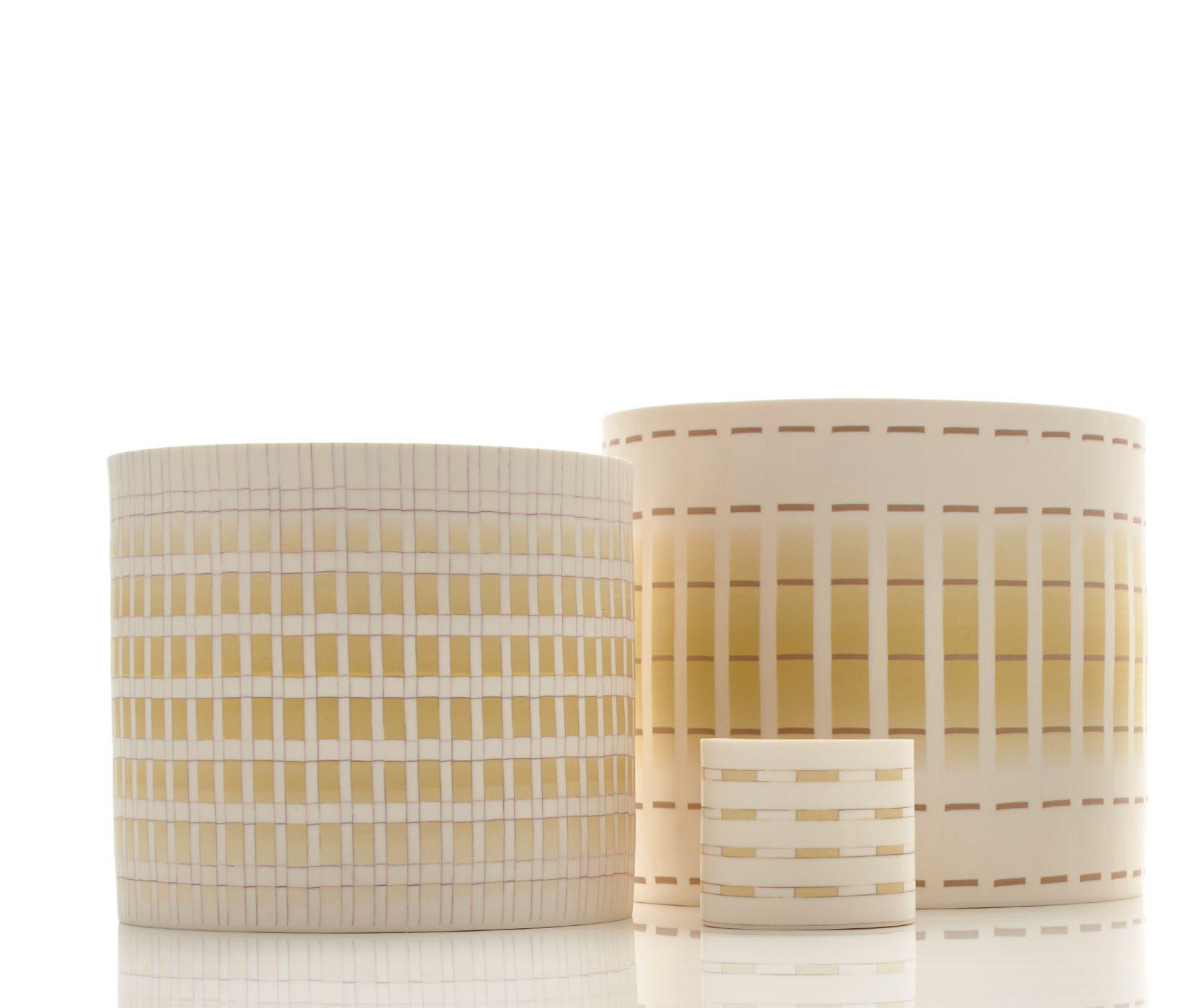10
11
10 Vejigante: Mama, 17 in. (44 cm) in height, terra cotta, terra sigillata, wood, paint, gilding, 2020. 11 Vejigante: Papa, 17 in. (44 cm) in height, terra cotta, terra sigillata, wood, paint, gilding, 2020. 10, 11 Photos: Destini Ross.
themselves in museums, historic homes, or artworks to see themselves, their ancestors, their history, and know that they, we, have always mattered. Anyone who is willing to question the narratives of history, who can ask, “Who is present, who is missing, and what is their story?”—that’s my ideal audience. Studio Space
After having what seemed to be unlimited space and resources at Indiana University, Bloomington, the transition from graduate student to artist working from home was a shock! I think it didn’t really dawn on me that I would have to figure out how to develop a new art practice in a new space so soon after just figuring out what sort of art practice I wanted in the first place. And truthfully, the first few months after graduating were pretty difficult emotionally. How would I continue to make large-scale figurative work? How could I make work without equipment? How long was it going to take me to get up and running? And how was I going to maintain my studio practice and work a full-time job? I quickly realized I would have to make fundamental shifts in my thinking. If I didn’t have access to a studio, wood shop, metal shop, and glaze room, what could I have access to? My partner and I decided our house really needed to become a studio first, then a home. I took over the dining room and added work tables. This is where I tend to sculpt, roll out slabs, and handbuild. It turns out I really enjoy the space. There is a lot of sunlight, and I can watch birds as I work. I like being able to be home and spend time with my dogs and partner. For assembling larger projects, I spread out into the living room. Sawhorses and tabletops are great for setting up impromptu work spaces that can be put away when not in use. An upstairs guest room is where I do small-scale metal and fiber work. I set up a plaster and mold-making area in the basement and that is working well. The basement has concrete floors and floor 32
www.ceramicartsnetwork.org
drains, so I can easily clean up spills and control dust by mopping. I always use a respirator downstairs, but it helps that there are windows to help with circulation. And I make sure there is little chance of contaminating the clay with plaster because I keep the areas very separate. As a woman, it has felt particularly empowering to take up space and make my home meet my needs first. Studio Equipment
Another shift in thinking had to occur around equipment. I had to ask myself what I really needed, what I would need eventually, and what things were just nice to have. I joined a bunch of Facebook groups for folks selling used pottery supplies and the best score of the year was a Brent C wheel! I agonized for a while about kilns, and my friend Jonathan Christensen Caballero convinced me that the kiln I could afford at the moment was the best kiln to have! I purchased a Cress E911t. Designed for doll parts and jewelry, I was surprised at how much I really could fire in the kiln, especially if I thought about my work as made up of multiple parts. For larger projects, I was able to ask my local paint-your-own pottery studio to fire in their kilns for a set price per load. Having this first taste of a functioning home studio makes me think down the road I would love to build a studio from the ground up. The only challenge of setting up our house this way is that messes are harder to contain and I find myself continuously working on just one little thing more. Having a live/work space where there is some sort of separation might make our visiting friends more comfortable, too, since we do not currently have a sofa! While I have enjoyed setting up my studio, I am gladly packing it all up soon. I recently accepted a position teaching sculpture and mixed media at Alfred University and will be moving this summer. To learn more, visit www.joannquinones.com.










